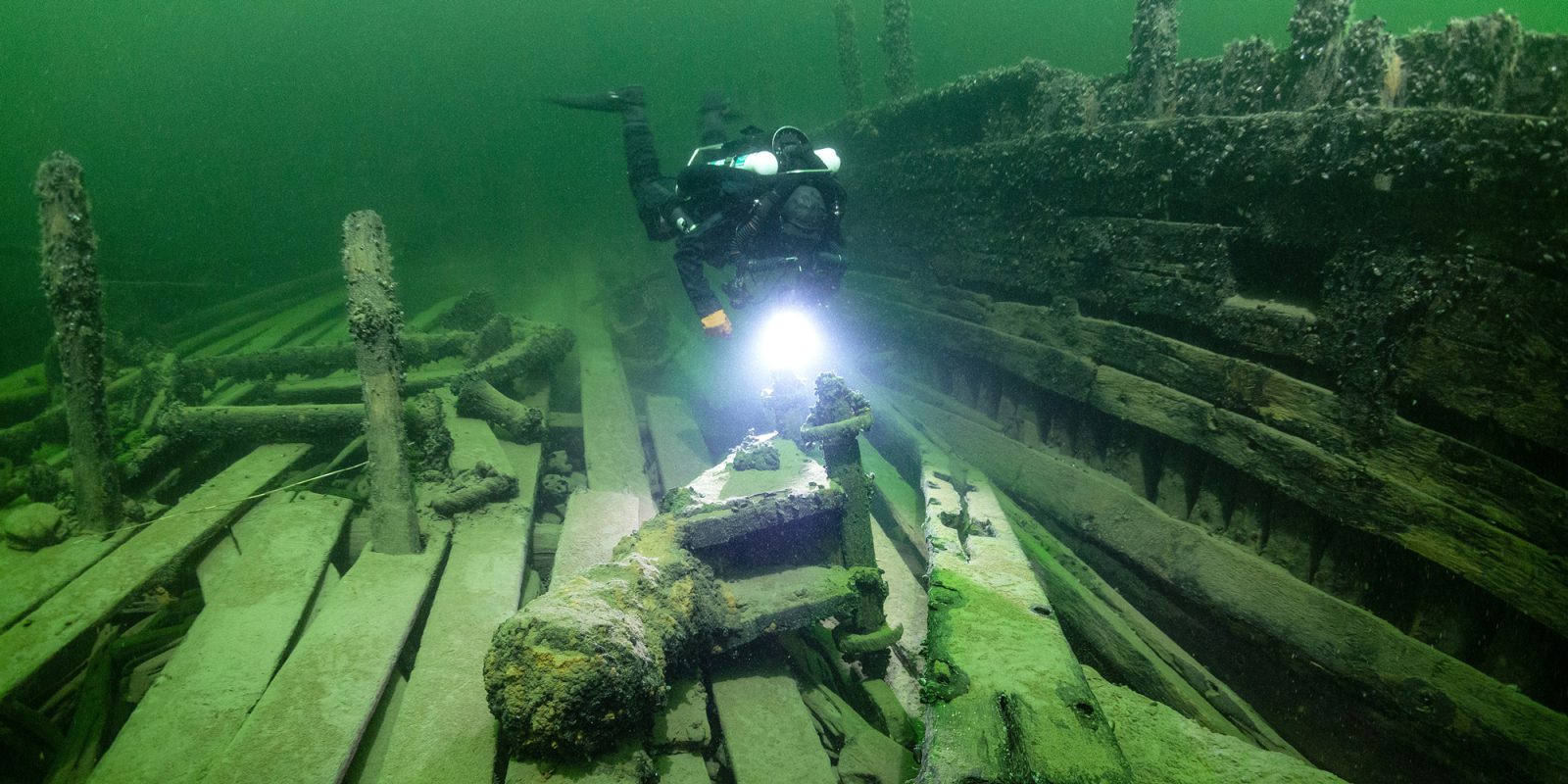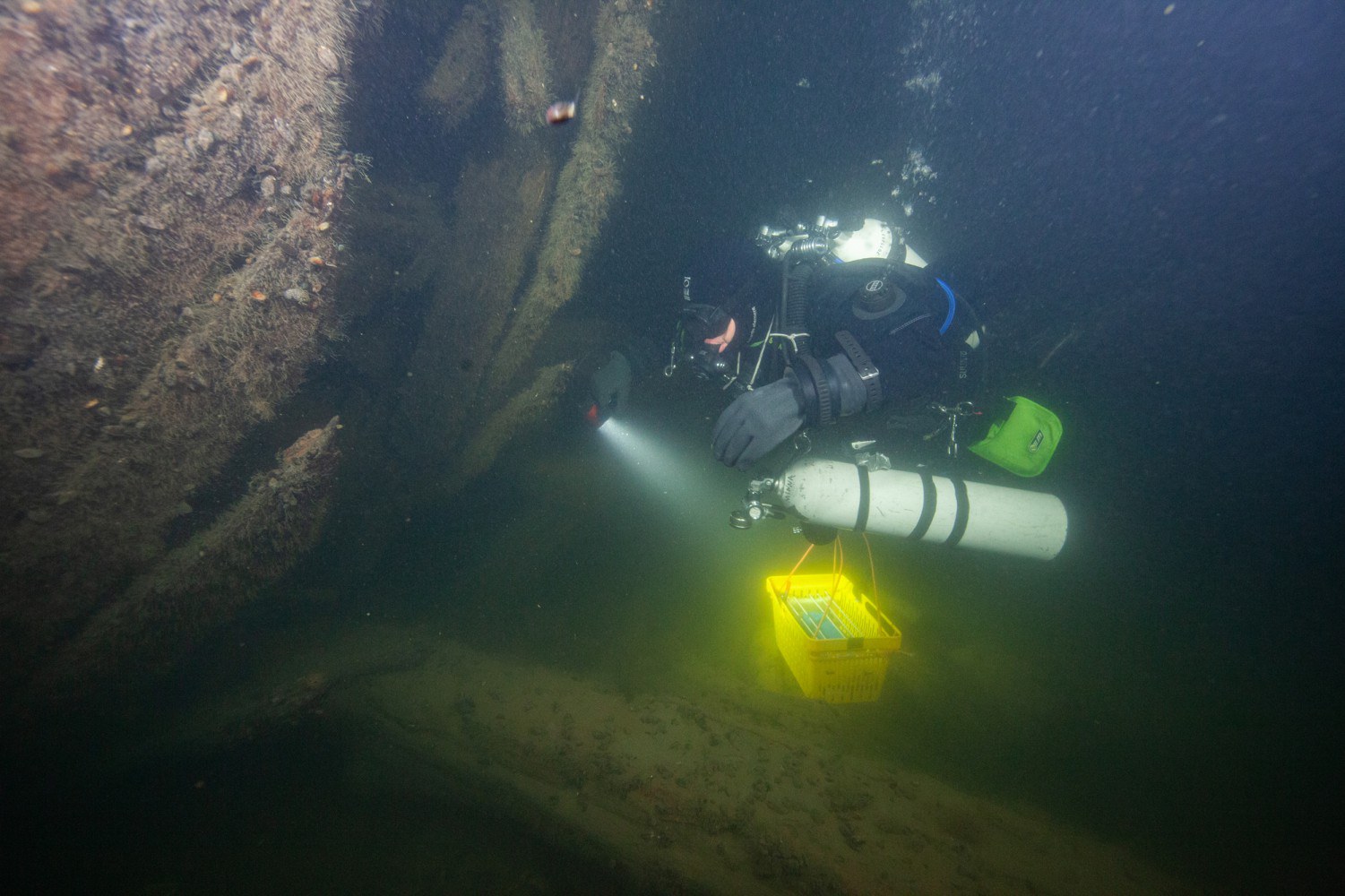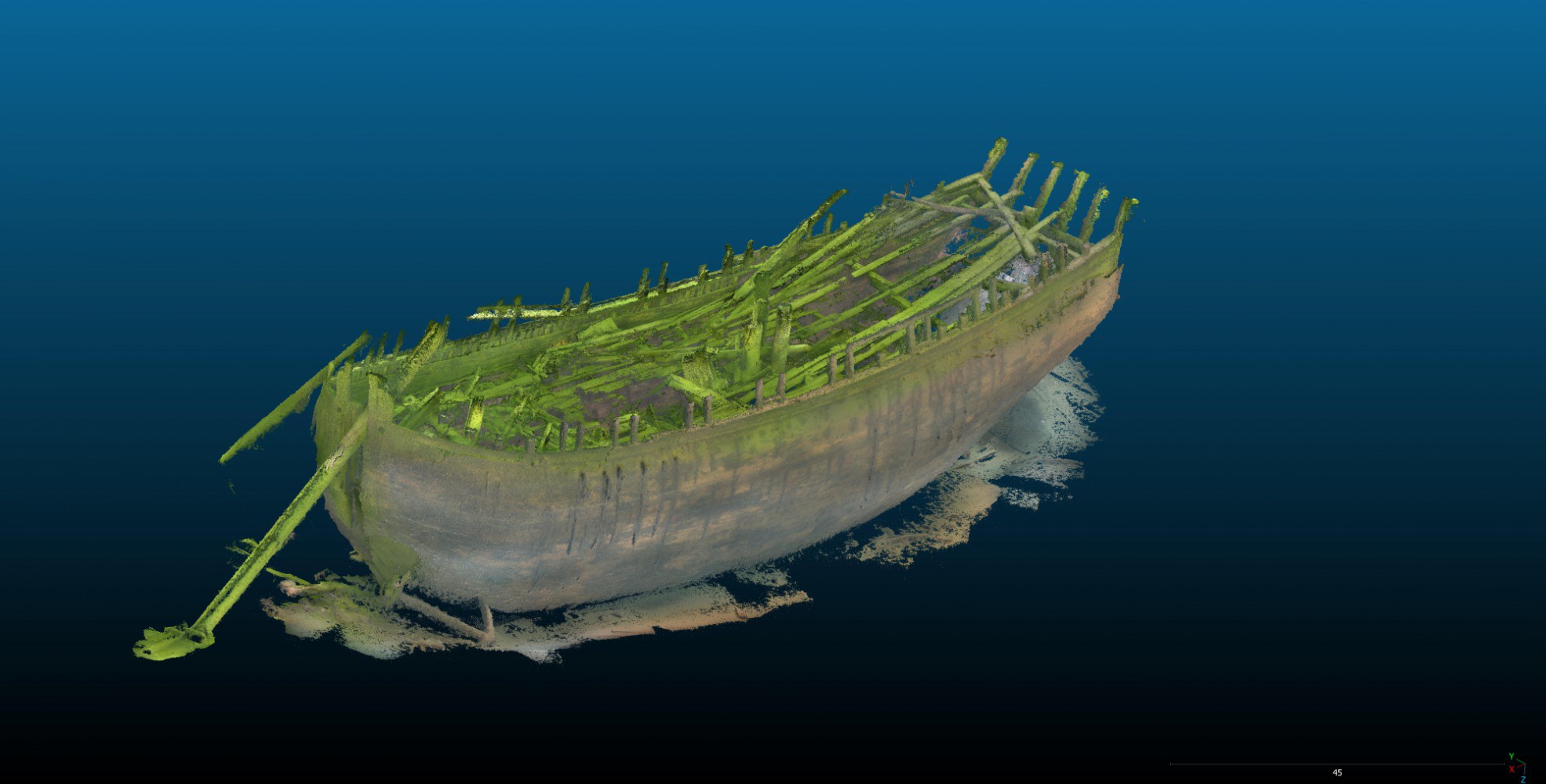
A protected area established around the Hästö Busö wreck – diving will only be allowed with the permission of the Finnish Heritage Agency
In its special session on 13 December 2022, the Finnish Heritage Agency has decided to establish a protected area around the Hästö Busö wreck in accordance with the Antiquities Act. The historic wreck of a sailing ship is located in Raseborg, and it has already been designated an ancient relic protected under the Antiquities Act. A protected area was established to safeguard the preservation of this significant research site. In the future, diving around the wreck will require permission from the Finnish Heritage Agency.
The wreck site is located in Raseborg, about 3 kilometres southwest of the Hästö Busö island and at a depth of around 30 metres. The wreck is recorded in the Agency’s Ancient Relics Register under the name Hästö Busö lounaispuoli and number 1000045984. The protected area is a round area of 800 metres in diameter with the wreck in the centre.
From 13 December 2022 onwards, diving in the protected area requires a permit from the Finnish Heritage Agency. The wreck is not a recreational dive site, and all diving in the area is done for conservation, monitoring and research purposes. Anchoring is prohibited in the protected area, as is fishing using methods that may harm the wreck. Carrying out any construction work or otherwise altering the seabed is also prohibited. However, it is permitted to pass through the protected area by boat.
Exceptional protective measure
The Antiquities Act protects both terrestrial and underwater ancient relics. Old shipwrecks are protected based on their age. A wreck or part of a wreck that can be assumed to have sunk more than 100 years ago is treated as an immovable ancient relic.
Establishing a protected area under the Antiquities Act is an exceptional measure of protection in Finland. In the past, only five wrecks have been protected under the same procedure:
- warship St. Nikolai, which sank off the coast of Kotka in 1790
- merchant ship known as wreck Borstö 1, which sank in the Archipelago Sea in Pargas to the south of Borstö island in the 18th century
- merchant ship Vrouw Maria, which sank in the Archipelago Sea in Pargas to the southeast of Jurmo in 1771
- unidentified merchant ship, which sank in the Archipelago Sea in Pargas by the Gråharuna island to the north of Utö between late 16th and early 17th century
- Dutch warship Huis te Warmelo, which sank off the coast of Porvoo in the open sea to the west of the Kalbådagrund lighthouse in 1715.
Protected areas are used to ensure the preservation of sites of different ages and types that are significant for research in such a way that provides a representative sample of the maritime history of the Baltic Sea. Establishing the boundaries of the protected area emphasises the significance of the wreck and helps create awareness of the need for its protection also in connection to fishing and civil engineering. Protective areas around the wrecks are controlled by the Finnish Border Guard and by the Coast Guard on the Gulf of Finland.

Items removed from wrecks without permission
Diving around wrecks is permitted in Finland, and even wrecks protected under the Antiquities Act can be visited without the need to ask for permission or even notify the authorities. Many groups of divers have volunteered to produce information and images on wrecks, respecting the wrecks as important cultural heritage. Such divers are important partners for the Finnish Heritage Agency.
However, there are also divers who pick up objects from wrecks during recreational dives – some knowingly, some without realising this should not be done. A wreck like the one in Hästö Busö, which contains a lot of objects, attracts people to remove items without permission. The Finnish Heritage Agency has received numerous reports from wreck divers that objects have disappeared from wrecks protected under the Antiquities Act, including the Hästö Busö wreck. The Finnish Heritage Agency has requested the police to investigate such cases. There have also been suspicions in both Finland and Sweden that objects removed from historical wrecks without permission have ended up for sale internationally.
Unauthorised removal of objects and damage to the wreck’s hull can cause challenges for conducting research on the wreck. It is illegal to damage a protected wreck and remove objects from it. According to the Antiquities Act, ancient relics may not be excavated, covered, altered, damaged, removed or interfered with in any other way without permission. Violations of the Antiquities Act are punishable by a fine or even imprisonment in serious cases. Stolen objects must be handed over to the state. According to the Antiquities Act, the state owns all objects contained in ancient relics.
Plenty to explore in the wreck
The Hästö Busö wreck is a carvel-built wooden sailing ship. The wreck is approximately 27 metres long and 8 metres wide. The wreck is well preserved, and the hull has remained intact.

So far, there is no certainty as to where the ship was built, which flag it was sailing under and where it was heading. Neither is there any information on what caused the shipwreck or what happened to the crew. The contents of the ship’s cargo and the structure of the ship are only partially known.
The shape of the hull indicates that the ship was built in the late 18th century. Based on the objects found in the wreck, it can be assumed that the shipwreck took place during the Napoleonic wars (1803–1815).
The wreck has exceptional potential for research. Once the physical remains of the wreck have been examined more thoroughly, there will be a better chance of finding archival sources related to the ship to uncover the ship’s story and bring to light its role in the seafaring and trading history of the Baltic Sea. Studies conducted in the wreck also make any materials contained within it available for international researchers.
Seafaring is an international endeavour by nature, and therefore the study of underwater cultural heritage is also very international. The Hästö Busö wreck is part of European underwater cultural heritage which links the histories and cultures of many countries through, for example, the contents of ships’ cargoes. The northern Baltic Sea preserves wrecks exceptionally well, which means that it is important for Finland to identify sites of international importance and provide adequate protection for sites that are valuable for research.
Further information
Intendant Maija Matikka, Finnish Heritage Agency, maija.matikka@museovirasto.fi, tel. +358 (0)295 33 6284
Intendant Päivi Pihlanjärvi, Finnish Heritage Agency, paivi.pihlanjarvi@museovirasto.fi, tel. +358 (0)295 33 6209
Decision for establishing protected area (pdf, in Finnish)
The Hästö Busö wreck in the Ancient Relics Register (in Finnish)
Pekka Tuurin kuvia Hästö Busön hylystä. Kuvia saa käyttää suojelualueesta tiedottamiseen. Muu käyttö sopimuksen mukaan. Ota yhteyttä: vietsinta@musoevirasto.fi